
Dean's Report 2022
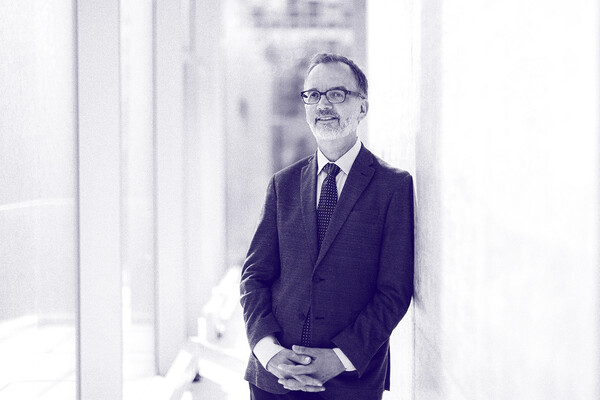
A gentle hum has returned to campus. After more than two years of remote learning and working, our students, faculty and staff are back in classrooms and offices. Our research operations, which slowed but never stopped their essential work, are once again bustling. It provides a sense of familiarity, yet few of us would call it "normal." The COVID-19 pandemic has presented unprecedented challenges and strains but also demonstrated the resilience of our community and the importance of our work.
Over the previous year, the Temerty Faculty of Medicine has seen tremendous opportunities. The Ontario government announced support for establishing the Scarborough Academy of Medicine and Integrated Health at the University of Toronto Scarborough. It will be home to a new MD Program academy, our physician assistant program, and an expansion of our physical therapy program. We also received support for a historic growth of postgraduate medical education positions, and the Toronto Academic Health Science Network continues to grow stronger with the addition of the Scarborough Health Network and Humber River Hospital. We are playing an essential role in strengthening our health system through these steps.
At the same time, we continue to invest in research to address chronic health challenges such as cancer and heart disease while also investigating emerging viruses, including COVID-19 and monkeypox. Critical to our success are facilities like the Toronto High Containment Facility, the only Combined Containment Level 3 lab (C-CL3) in the Greater Toronto Area. To make this possible, we are amplifying our support for the development and review of research grant applications and new strategic research initiatives to ensure we have the resources necessary to realize our full research potential.
To achieve excellence, we must embrace equity. To that end, I am glad that this year we opened two new offices to help in how we engage and support underrepresented communities. The Office of Indigenous Health supports learners, faculty and staff across the education continuum, informed by principles and practices of Indigenous self-governance. The Office of Access and Outreach will be a new hub for existing outreach programs to underrepresented communities, including the Summer Mentorship Program and the Community of Support program, as well as new initiatives being planned.
As we look to the future, new priorities will emerge. For example, the climate crisis is a pressing challenge that we as a community must be prepared to face. That includes developing new educational opportunities to help our learners, faculty, staff and alumni understand the scale of the problems we face, but also how we can work to address them. Similarly, we must also provide greater support to our people, developing their leadership potential and ensuring their wellbeing. These are just some of the conversations I look forward to having in the year ahead. As I do, I know I can count on the commitment and engagement of our community to push us further to meet the needs of our patients, neighbourhoods and the world.
Sincerely,
Trevor Young
Dean, Temerty Faculty of Medicine
Vice Provost, Relations with Health Care Institutions
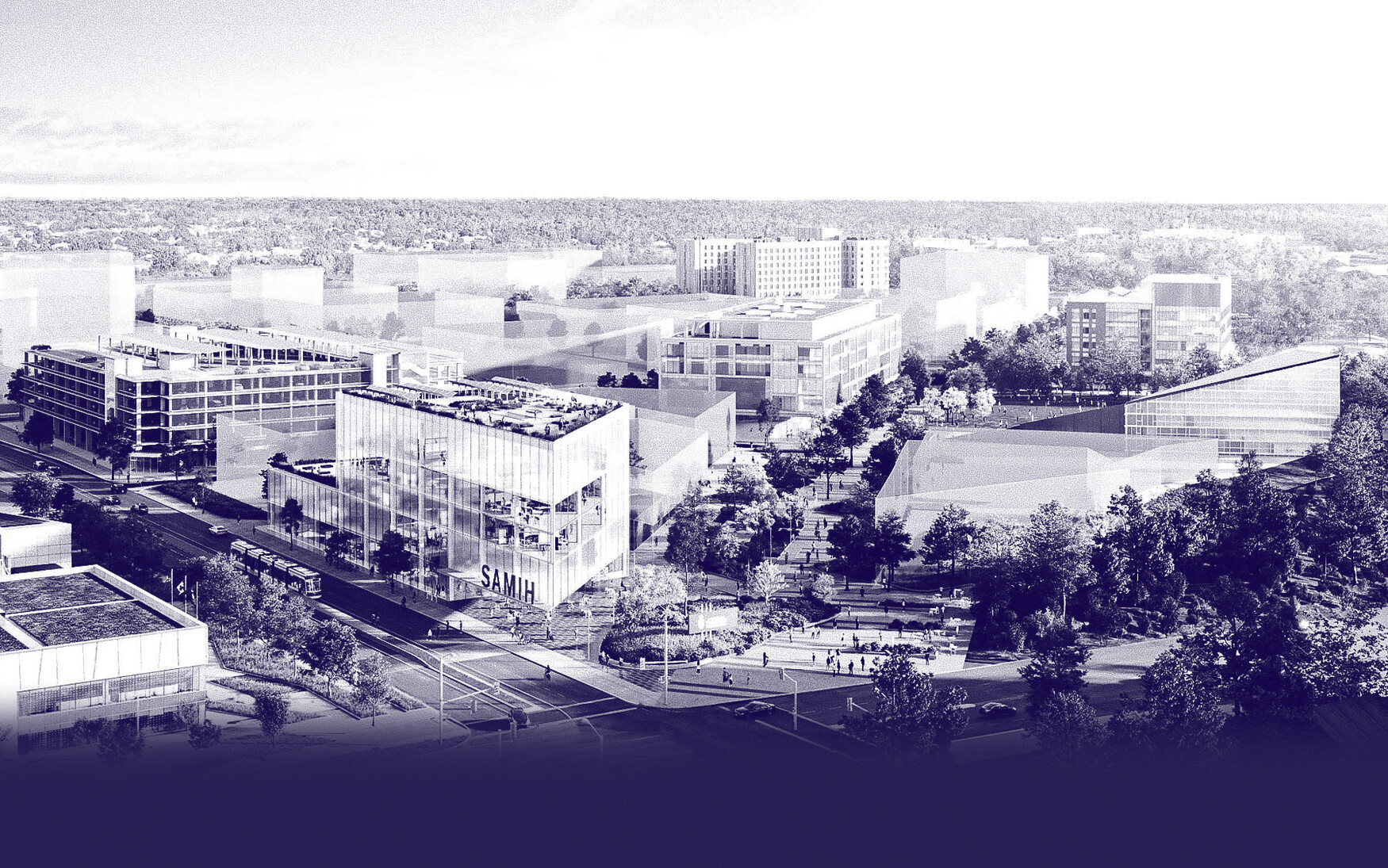
Ecosystem of Collaboration
Temerty Medicine thrives through collaborations, which allow this Faculty to combine strengths with other institutions to inspire discovery, develop new training opportunities and invest in shared resources.
Over the last few years, Temerty Medicine has quietly collaborated with U of T partners — including the University of Toronto Scarborough (UTSC) and the Lawrence S. Bloomberg Faculty of Nursing — as well as hospital and community partners to develop a proposal to establish the Scarborough Academy of Medicine and Integrated Health (SAMIH). In March 2022, the Ontario government announced its support for SAMIH, which will include a new academy for Temerty Medicine’s MD Program, expand the physical therapy program, and relocate the Physician Assistant Program along with some existing nurse practitioner student positions to UTSC. Through community engagement, outreach programs, expanded undergraduate programs at UTSC and community-facing clinics, SAMIH will be a hub for health training in the Eastern Greater Toronto Area (GTA).
Temerty Medicine continues to benefit from engagement with hospital partners through the Toronto Academic Health Science Network (TAHSN), which brings together U of T alongside 14 full and associate affiliated academic hospital organizations. In June 2021, TAHSN welcomed Humber River Hospital and Scarborough Health Network as members. As noted throughout this report, TAHSN has been a nexus for activity that has furthered shared interests in improving learning environments, advancing research and improving healthcare delivery for patients throughout the GTA.
Our Faculty has also strengthened relationships with the Faculty of Arts & Science through the appointment of Professor Ahlia Khan-Trottier as the first Associate Dean, Undergraduate Education. This new role will improve the undergraduate learning experience at the University of Toronto by providing leadership in course and program development, teaching innovation and the sharing of education resources, through closer interaction between Temerty Medicine, Arts & Science and other University divisions.
(Image above: rendering of the Scarborough Academy of Medicine and Integrated Health)

By Blake Eligh
Collaboration, communication and a focus on the undergraduate experience — that’s what Ahlia Khan-Trottier has set her sights on as the inaugural Associate Dean, Undergraduate Education at the Temerty Faculty of Medicine . . . .
Read the full story
Appointed for a five-year term that began in July 2022, Khan-Trottier will provide leadership for undergraduate programs in the basic sciences such as molecular genetics, biochemistry and physiology, and be a voice for those programs across the university.
Now an Associate Professor, Teaching Stream in the Department of Biochemistry, Khan-Trottier began her time at U of T as a student, earning an Hons B.Sc. (1999) and PhD (2006) in biochemistry before discovering a passion for teaching during her graduate studies.
Prior to her appointment as associate dean, Khan-Trottier served as Director of the Division of Teaching Labs, overseeing the delivery and development of laboratory courses.
A celebrated instructor, Khan-Trottier delights in student successes. “When you see the light bulb go off in a student’s head, and you know that they have really understood, you have made a difference,” she says. “It’s rewarding to see skills develop.”
Her dedication to improving the student learning experience has earned accolades, including a 2016 teaching award for excellence, which lauded Khan-Trottier’s pedagogical efforts to improve student learning, introduce new experimental methods and foster skill development.
Khan-Trottier will bring that dedication to her new duties as associate dean, and says she’s excited by the focus on undergraduate education.
“Our basic science undergraduate programs are really important. The creation of this role ensures that there is a focus on the undergraduate learning experience at a divisional level alongside clinical and research programs at the faculty.”
Khan-Trottier’s appointment will also strengthen ties between Temerty Medicine and the Faculty of Arts & Science, and the broader institution.
“We need to ensure that Medicine has an active voice in decisions and discussions that happen around science at the university,” she says.
“Our undergraduate students are really Arts & Science students,” she continues. “My role is also to be that point of contact between Arts & Science and Medicine.”
“I will foster collaboration and communication, not just within our own Faculty and between our departments, but also between Medicine and other divisions.”
In the coming months, Khan-Trottier will consult with current students and alumni, staff and faculty to determine priorities for her tenure.
“The goal is to really understand the student experience, what their needs are and how we can better address those needs,” she says. “This touches on student life, but also on what affects our faculty who are teaching those programs, and the staff who support them.”
“If there’s an opportunity to expand or modify our programming, identifying skills and competencies will set that direction. Then we can figure out exactly what that will look like, whether it’s a new program, a service, or a modification to the existing program.”
Another key priority will be enhancing opportunities for wellness and equity, diversity and inclusion training within the undergraduate experience.
“Medicine has a lot of really great equity resources for the research and clinical programs,” she says. “I want to ensure we bring those principals into all that we do, and provide those supports to ensure our undergraduate students and our community have the best experience that they can.”
“The goal is to really understand the student experience, what their needs are and how we can better address those needs.”Ahlia Khan-Trottier, Associate Dean, Undergraduate Education
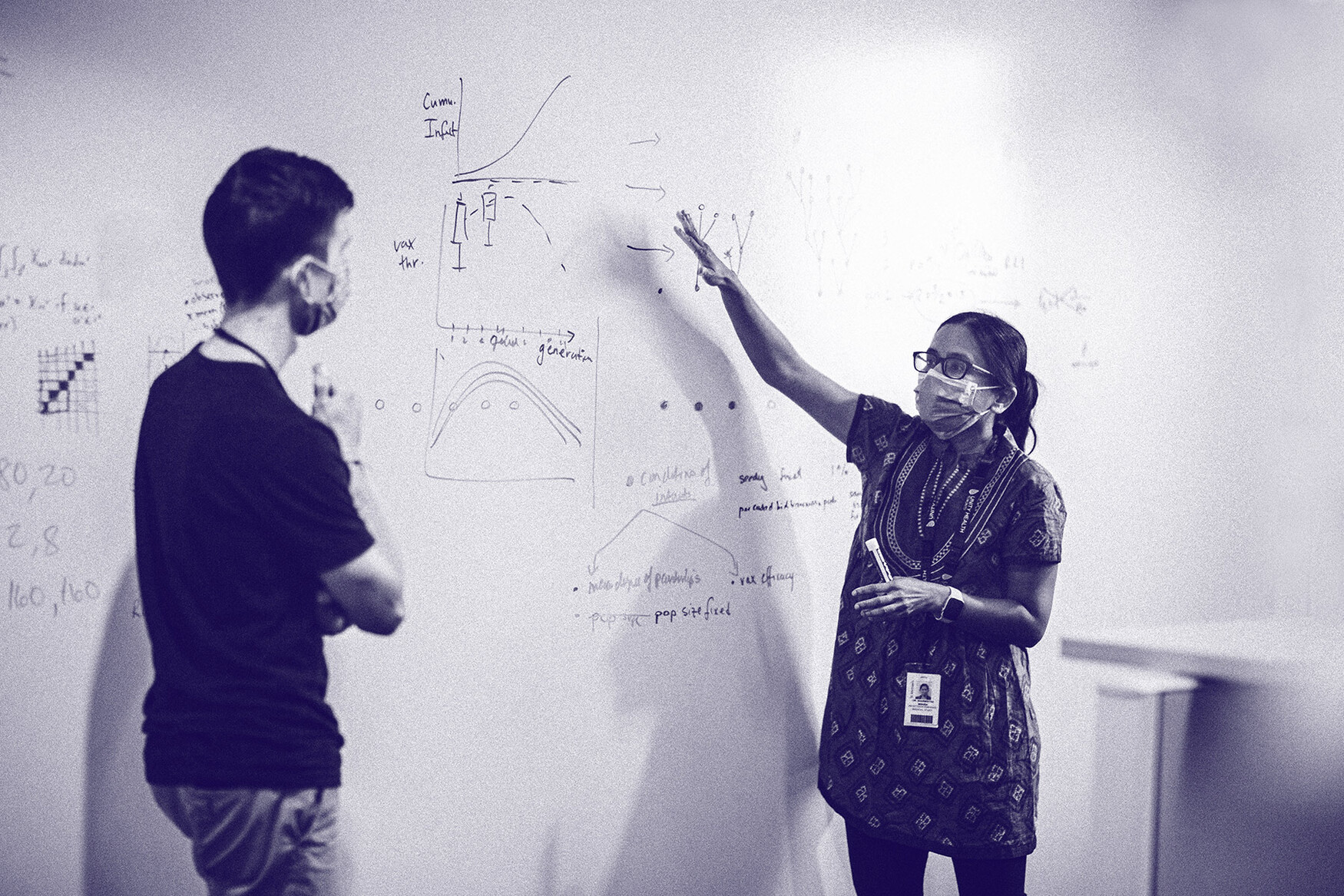
Groundbreaking Imagination
Collaborations and partnerships are also critical to fueling groundbreaking imagination. A great example is the Emerging and Pandemic Infections Consortium (EPIC), which continues to be a top research priority for Temerty Medicine. The consortium includes U of T, The Hospital for Sick Children, Sinai Health System’s Lunenfeld-Tanenbaum Research Institute, Sunnybrook Research Institute, University Health Network, and Unity Health Toronto. Its mission is to support infectious disease research, including the fight against COVID-19 and monkeypox. It is home to the Toronto High Containment Facility, which is the only Combined Containment Level 3 lab in the Greater Toronto Area. This collaboration will be essential to better understand and treat infectious diseases, and will train a new generation of leaders in this critical field.
Support for the grant application process is being reinvigorated, supported by the appointment of Professor Karen Maxwell as Temerty Medicine’s Research Director for Basic Sciences. In this newly established role under the Vice Dean, Research & Health Science Education, she oversees the College of Internal Scientific Reviewers, which supports the pre-review process for grants. She will also help administer the Temerty Pathway Grants, an internal CIHR bridge grant for top-rated project grant proposals from on-campus Temerty Medicine applicants. In addition, work is underway to develop a more robust awards nomination process to ensure the excellent work of researchers gets appropriately recognized by internal and external organizations. A similar role to support clinical researchers and knowledge translation is also under development.
Temerty Medicine continues to see its community members recognized for their national and international leadership through honours and awards. They include:
-
Professor John Dick, honoured with the 2022 Gairdner International Award by the Gairdner Foundation for the discovery of leukemic stem cells and later work on diagnosing and treating acute myeloid leukemia.
-
Professor Zulfiqar Bhutta, recognized with the 2022 John Dirks Canada Gairdner Global Health Award by the Gairdner Foundation for his research on community-based and policy interventions in child and maternal health, especially among vulnerable populations.
-
Professor Patricia Houston, who received the 2021 Ian Hart Award for Distinguished Contribution to Medical Education by the Canadian Association for Medical Education to recognize her exceptional contributions to medical education throughout her academic career.
-
Professor Donald Weaver, honoured with the Oskar Fischer Gold Prize by the University of Texas at San Antonio for his research into a new theory of Alzheimer’s as an autoimmune disease.
-
Professor Sharon Walmsley, recognized with the 2022 Women of Distinction Award by the YWCA Toronto for her work as one of the first Ontario physicians to dedicate her practice to the care of persons living with HIV and pioneering care models to address the specific needs of HIV positive women.
(Image above: doctoral student Jesse Knight and Professor Sharmistha Mishra)
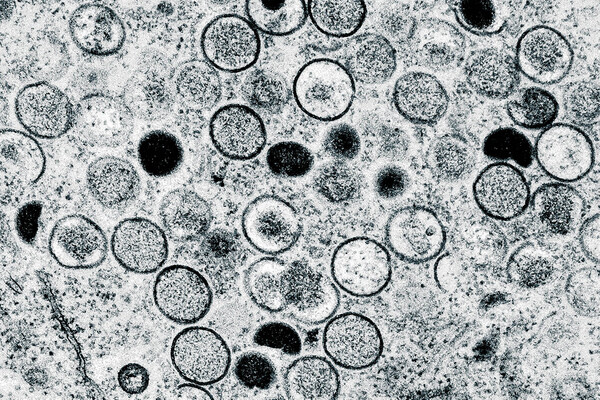
By Betty Zou
Less than three months since it launched, the monkeypox rapid research response led by the University of Toronto’s Emerging and Pandemic Infections Consortium (EPIC) and three partner hospitals is generating results that could help curb transmission of the virus . . . .
Read the full story
“When monkeypox first arrived in Canada, we quickly learned about the stockpile of smallpox vaccine [which also protects against monkeypox],” said Jesse Knight, a PhD student in U of T’s Institute of Medical Science. “Given that the vaccine supply was quite limited early on, it was important to use it quickly and efficiently to help reduce cases.”
Knight is the first author on a new modelling study that looks at how to optimize the initial rollout of vaccine to prevent the most infections. The study suggests that the greatest number of infections could be prevented by prioritizing vaccines to bigger cities with larger networks of communities at risk, the highest epidemic potential and largest number of initial cases.
Knight notes these results do not mean that areas outside of big cities should not receive vaccines, but rather they provide guidance on how to maximize immediate impact — early in an epidemic — of an extremely limited supply until more doses become available. Indeed, while Ontario’s vaccination efforts initially centred on Toronto, they soon expanded to areas outside the city.
The findings, which have not yet been peer reviewed, were co-authored by Knight’s academic supervisor Sharmistha Mishra and collaborator Darrell Tan, both Associate Professors in U of T’s Temerty Faculty of Medicine and clinician-researchers at St. Michael’s Hospital, Unity Health Toronto. Mishra and Tan are also co-leads of EPIC’s monkeypox rapid research response.
For their study, the researchers built a mathematical model that simulated the potential transmission of monkeypox virus in the context of sexual networks of gay, bisexual, and other men who have sex with men. The model reflects two interconnected sexual networks that can be thought of as communities within two cities — one larger network like in Toronto and a smaller network in a medium-sized Ontario city — and simulated the roll-out of 5,000 vaccine doses starting two months after the first case of monkeypox.
The team tested scenarios in which they changed the relative population size in each network (i.e., city), the interconnectedness between the two sexual networks (sex among individuals between cities), epidemic potential of the virus in each city, and the distribution of initial “imported” cases across cities.
A city’s epidemic potential reflects how likely a person carrying the virus is to pass it on to others, by taking into account the density and configuration of the sexual network, access to prevention and care, and the underlying social and structural contexts that shape sexual networks and shape access.
“Early insights from these analyses helped inform vaccine prioritization by health units across Ontario, which to date has centred on community-based organizations, service providers, health units, and public health teams at every level working together to mobilize access and deliver vaccines to gay, bisexual and other men who have sex with men who may be most at risk of infection,” said Mishra.
From the start, Mishra said, community leadership has been at the forefront of the response, including the science — with modeling questions, inputs, interpretation, and application shaped by communities and the public health actors working to serve communities.
Knight hopes that this work will also have an impact on how vaccines are deployed globally. “Given our increasingly connected world, our findings really highlight the importance of global vaccine equity in responding to outbreaks, and also in preventing them in the first place," he said.
Vaccines can help break chains of transmission when deployed strategically, but another opportunity to stop transmission is in the environment — where people infected with the virus may shed it onto surfaces and objects.
“We knew very little about fomite [surface] transmission of monkeypox prior to this outbreak,” said Christopher Kandel, an Assistant Professor in Temerty Medicine’s Department of Medicine and an infectious disease physician at Michael Garron Hospital, Toronto East Health Network.
To address that knowledge gap, Kandel and Sharon Sukhdeo, an infectious diseases resident at U of T, teamed up with Temerty Medicine professors and EPIC faculty members Allison McGeer, Adrienne Chan, and Matthew Muller to study the risk of environmental transmission of monkeypox.
For the first part of their study, the team swabbed a mixture of high- and low-touch surfaces in hospital exam rooms where patients with monkeypox had received care. They tested the same surfaces again after the rooms had been cleaned.
Their preliminary results showed detectable levels of monkeypox DNA on many high-touch and a few low-touch surfaces. Encouragingly, the researchers could not detect the virus on the majority of surfaces after cleaning. Where they did detect the virus after cleaning, levels were significantly reduced.
Kandel notes that while they were able to detect monkeypox DNA, their methods can’t determine whether the detected virus was infectious.
As a next step, the researchers will expand their study to look at environmental transmission within households. They will ask people who are self-isolating with monkeypox to swab objects and surfaces in their home at different timepoints, which will provide insight into how long an infected person sheds the virus and whether common at-home cleaning products can effectively disinfect contaminated surfaces.
“There are so many questions that need to be answered,” said Kandel. “With these studies, we’ll have a much better understanding of monkeypox transmission, including how infectious people are and how long isolation should last to best protect others.”
"Given our increasingly connected world, our findings really highlight the importance of global vaccine equity in responding to outbreaks, and also in preventing them in the first place."Jesse Knight, PhD student in U of T’s Institute of Medical Science

Excellence Through Equity
Temerty Medicine has continued to enhance activities and support services in equity, diversity, inclusion, Indigeneity and accessibility. These efforts, overseen by the Associate Dean, Inclusion and Diversity, Professor Lisa Richardson, have expanded the Office of Inclusion and Diversity (OID), and included the hiring of new roles to support education, communication, and research on accessibility. Collaborations have continued with the Centre for Faculty Development in delivery of the Foundations of Anti-Oppressive Healthcare program.
Two new offices were also launched this past year: the Office of Indigenous Health (OIH) and the Office of Access and Outreach (OAO). OIH is supported by a Manager, Lindsey Fechtig, and an MD Program Indigenous Health Curricular Lead, a PGME Lead in Indigenous Health, an Educator in Indigenous Health and an Elder-in-Residence, Kawennanoron Cynthia (Cindy) White. The OAO, which was launched in July, is led by Ike Okafor, Senior Officer for Service Learning and Diversity Outreach. It will be a hub for existing outreach programs to underrepresented communities, including the Summer Mentorship Program and the Community of Support Program, as well as forthcoming initiatives.
Incidents of religious and racial discrimination continue to be a concern within the Temerty Medicine community. The Faculty has taken several steps to address this, including reviewing the curriculum, appointing senior advisors on antisemitism and Islamophobia, and hiring postdoctoral fellows who research religious-based discrimination. Temerty Medicine will continue to address these pernicious problems through training opportunities for learners, faculty, and staff and through careful consultations with communities impacted by hate and intolerance. Members of the Temerty Medicine community have been engaged in the TAHSN Anti-Racism EDI Data Collection Working Group, the TAHSN Anti-Racism Education and Training Working Group, and the TAHSN Anti-Racism Incident Reporting Working Group, which were established to address anti-Black and anti-Indigenous racism.
(Image above: medical students Kisanet Kebedom and Ali Butt)
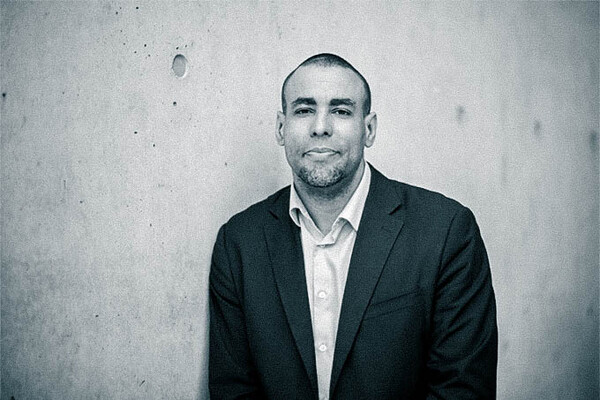
By Jim Oldfield
In 2014, Ali Butt was an unlikely future doctor. As a low-income child of immigrants whose family had hit sudden health troubles, he started working three jobs to pay for undergraduate studies in kinesiology at McMaster University . . . .
Read the full story
Today, Butt is a second-year student in the MD Program at the University of Toronto’s Temerty Faculty of Medicine, with plans to specialize in family and emergency medicine, and hopes to be a clinician-educator and global health practitioner.
What changed Butt’s career path? Hard work and persistence, no doubt — he keeps the poem ‘Do it Anyway,’ often attributed to Mother Teresa, on his desk — but Butt also credits Temerty Medicine’s Community of Support program for helping him believe he could become a physician.
“I used to feel I had no place in medicine, partly because I had volunteered in hospitals and did not see myself reflected in the workforce,” Butt says. “My mentors in the Community of Support were compassionate and understanding, and the diversity in their backgrounds helped me see a way forward in the field,” he says.
The program supports under-represented students who aspire to study medicine, health professions, rehabilitation and basic sciences — especially those who are Indigenous, Black, Filipino or economically disadvantaged, and who identify as having a disability.
Program offerings include admissions information, experiential opportunities in research and leadership, and application-related support such as MCAT test and interview preparation.
Butt joined the Community of Support program RASI (Research Application Support Initiative), through which he gained medical research work experience, and SASI (Supporting Applications, Supporting Interviews), which pairs prospective with current MD students who guide candidates on medical school applications.
Inspired by those experiences and grateful for the opportunity to study medicine — acceptance to medical school felt like winning the lottery, he says — Butt now volunteers with Community of Support as a mentor.
“It’s been very meaningful as the person on the other side of those beneficial relationships. I want to give back and help foster change, starting with youth. To me, mentorship is part of what medicine is, or at least what it should be,” Butt says.
Involving physicians and students to level the playing field was a founding idea behind the Community of Support, says Ike Okafor, a Senior Officer for Service Learning and Diversity Outreach who founded the program and has led it since 2015.
“Each one of our initiatives represents an idea that has been developed with current students and the communities we serve,” Okafor says. “None of what we do would be possible without outstanding student leaders who take on roles as tutors and coordinators, as well as physicians and support from the communities we serve.”
The program has seen remarkable success and growth. Since 2015, over 440 matriculants from the Community of Support have entered medical school, including 23 per cent of the second-year medical school class. This past summer, more than 1,000 students engaged with program opportunities at Temerty Medicine and other North American schools, and Okafor says new program growth will target learners interested in basic and rehabilitation sciences.
Enrolment of Black medical students in particular has spiked at U of T recently. The university accepted at least 14 students who identified as Black to the MD Program in 2018, and at least 18 in 2022.
That success is attributable to a two-pronged strategy at Temerty Medicine that includes the Community of Support but also the Black Student Application Program, an optional entry stream that requires Black applicants to write a personal essay, and which enables file review and admission interviews by members of the Black community.
Most BSAP students at Temerty Medicine have come through the Community of Support, and other Canadian medical schools are now emulating that model, supporting Black students both before and during the application process.
Okafor and colleagues at Temerty Medicine have partnered with Western, Ottawa, McMaster, McGill and Dalhousie universities on program delivery, and have supported program development at universities in British Columbia and Alberta.
This fall, McGill University admitted 24 Black medical students through its Black Candidate Pathway; they all accessed McGill’s own Community of Support program, says Iyman Ahmed, a former Project Manager for both programs who now works in the management consulting industry.
Ahmed says the structure of programs at Temerty Medicine were formative in the creation of customized programs at McGill, and she cites U of T’s numbers — an increase in Black medical students from one to eight per cent over four years — as key to the internal funding that helped launch the McGill programs.
Similarly, at the University of Calgary’s Cumming School of Medicine, a new Black Applicant Admissions Process helped enable the entry of eight students who identify as Black to the MD Program this year.
Mairi Babey, a Program Coordinator with the Office of Professionalism, Equity and Diversity at the Cumming School, says the U of T programs were the main influence in how the school set up its Black applicant stream and Support to Entry Program, which like the Community of Support offers MCAT materials and test prep, as well as mentorship, to students from underrepresented groups.
“The Community of Support program in Toronto is really the envy, given its success and the number of partnerships they’ve established with Black, Indigenous and other health organizations,” Babey said.
And while it’s too early to tell whether the Support to Entry Program has had a direct and sustained impact on the demographics of MD students at the Cumming School, Babey said, the involvement of more than three dozen student volunteers as mentors in the new program has been heartening.
“Our mentors have been very active, they really want to give back,” Babey says. “That bodes well for our MD Program and ultimately for patients, who will benefit from having physicians who understand their needs because they’ve walked similar paths in life.”
Since 2015, over 440 matriculants from the Community of Support have entered medical school, including 23 per cent of the second-year medical school class.
Enrolment of Black medical students in particular has spiked at U of T recently. The university accepted at least 14 students who identified as Black to the MD Program in 2018, and at least 18 in 2022.
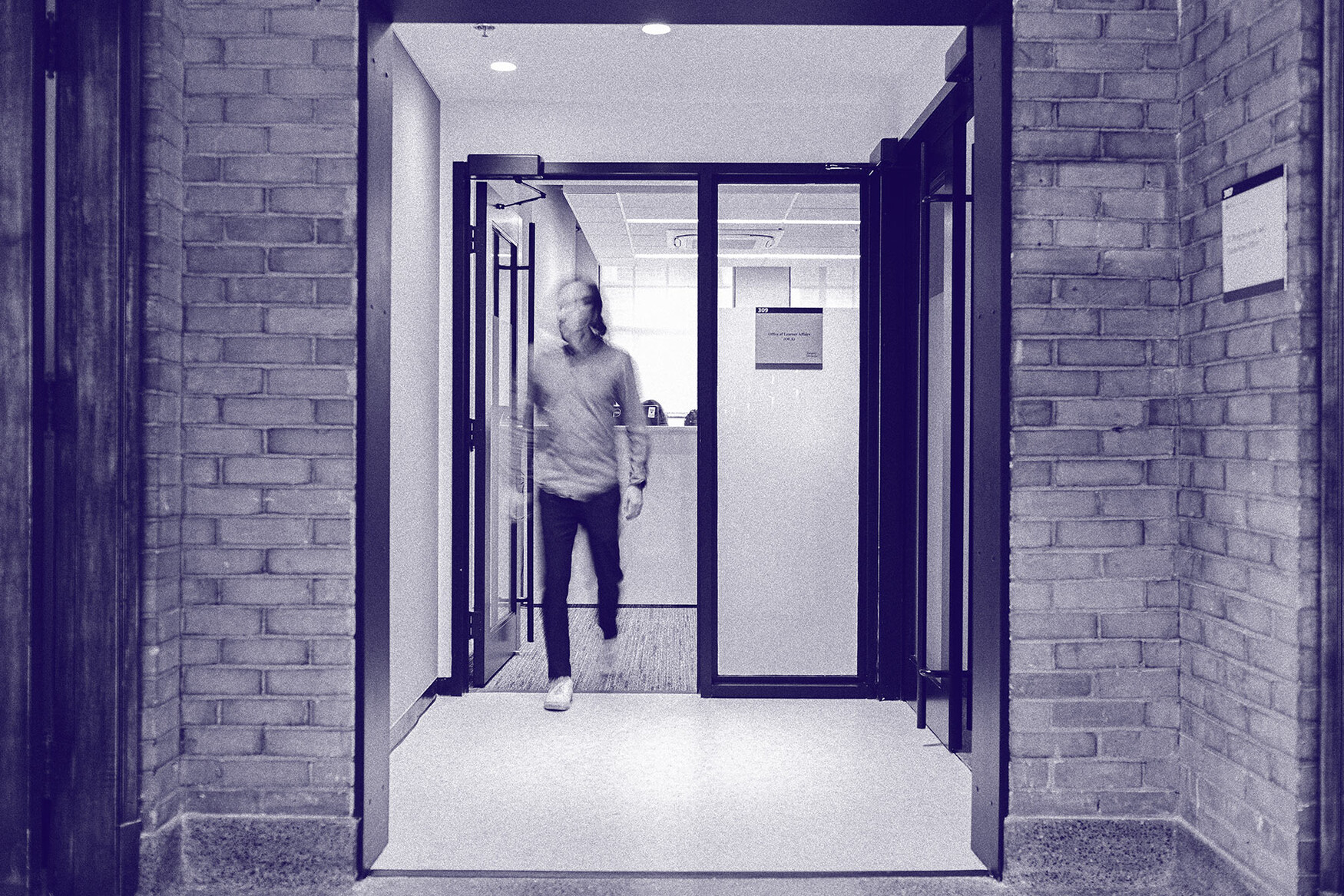
Support Health & Wellbeing in Everything We Do
As we continue to address the COVID-19 pandemic, we know the tremendous sense of exhaustion and burnout that many in the Temerty Medicine community feel. As stated in our initial strategic plan in 2018 and reaffirmed through our strategic plan renewal process undertaken last year, promoting wellness and providing support continue to be a high priority for this Faculty.
To better support learners across the spectrum of medical education, the Office of Health Professions Student Affairs and the Office of Postgraduate Wellness were recently merged to create the Office of Learner Affairs (OLA). Overseen by Associate Dean of Learner Affairs, Professor Tony Pignatiello, OLA provides various services, including academic and clinical skills enhancement, personal counselling, career counselling, and accommodation and accessibility. The office is further supported by the leadership of a team of professionals, including Professors Reena Pattani (Director, Learner Experience), Heather Flett (Professor of Learner Wellness), Chetana Kulkarni (Director, Undergraduate Learner Affairs), and Charlie Guiang (Director, Postgraduate Learner Affairs), among others.
Professor Julie Maggi, Temerty Medicine’s Director of Faculty Wellness, has partnered with Professor Simron Singh of Sunnybrook Health Sciences Centre to establish a TAHSN-wide Physician Wellness Working Group. They will develop initiatives across TAHSN to support physician wellness. This is one of many ongoing efforts to support faculty wellness in Temerty Medicine, which include establishing a U of T-based community of practice and working with departmental leaders to deliver tailored programs, support and mentorship. This work enhances initiatives led by U of T's Division of People Strategy, Equity, and Culture, to support wellness among faculty and staff.
(Image above: Office of Learner Affairs)
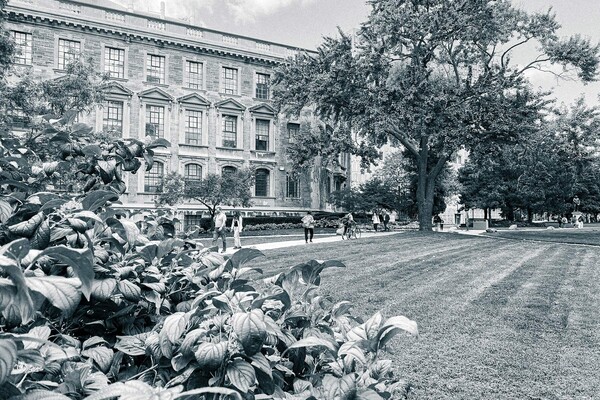
By Erin Howe
While juggling the demands of life and residency, Morgan* feared burning out.
The resident at the University of Toronto’s Temerty Faculty of Medicine was mourning the deaths of family members in their** home country, where a civil war continues. Meanwhile, they were managing clinical and academic roles, and dealing with their own physical health issues . . . .
Read the full story
"Residency is already an intense and busy experience and with the other pressures I faced, things were becoming untenable,” they said. “Rather than wait until I couldn’t manage any more, I knew I needed to be proactive.”
Despite their initial apprehension to ask for help, Morgan reached out to Temerty Medicine’s Office of Learner Affairs (OLA), created early this year through a merger of the Office of Health Professions Student Affairs and the Postgraduate Wellness Office.
Morgan worked with a learner life specialist to develop a short-term plan to take one day a week for their own medical appointments and family responsibilities, while continuing their training.
“Through OLA, I discovered options I hadn’t known about before and was able to maintain my wellbeing without disrupting my education,” they said. “Without the support I received, I wouldn’t be where I am now.”
Before OLA’s inception, residents and clinical fellows in postgraduate programs didn’t have access to the same level of support as students in the MD and MD/PhD programs. The merger allows OLA to offer services more equitably across the medical education spectrum.
It also offers support to students enrolled in medical radiation sciences, occupational therapy and physician assistant programs.
“OLA is designed to be a safe and neutral space for learners and its processes are confidential, trauma-informed and guided by the principles of equity, diversity and inclusion,” says Tony Pignatiello, Associate Dean, Learner Affairs, who is also an Associate Professor of psychiatry at Temerty Medicine.
Broadly, OLA’s core support services can be categorized as academic, professional and personal.
Learners choose the services they want to access, and staff are available to help guide their choices. The office can also remain connected to learners for the duration of their academic programs and connect them to an external organization that offers additional services as those needs arise.
About half of MD Program graduates continue their postgraduate medical training at Temerty Medicine.
“If learners struggle in their undergraduate studies, we can now offer them continuity if they want to access our services again,” Pignatiello says. “Their files don’t follow them but remain available if they return to us, which means they don’t have to repeat their histories.”
The office is an independent unit and keeps its files separate from the Faculty’s academic records. As well, members of OLA’s team aren’t involved in educational evaluations nor do they sit on any selection committees.
Faculty members who want to learn more about supporting learners through challenges can also access OLA. For example, if they are concerned that learners may be experiencing academic, personal or mental health difficulties because they’ve been missing lectures or haven’t been responding as usual, the office can provide guidance on how to approach the situation.
The OLA team has space in the Naylor Building on the St. George Campus and in the Terrence Donnelly Health Sciences Complex at the Mississauga Academy of Medicine. Appointments are available online and in-person.
“However learners make their way to us, no door is the wrong door,” Pignatiello says.
*Name has been changed to respect the learner’s privacy.
** Use of ‘they’ as a pronoun is for anonymity, not to indicate a gender identity.
“Through OLA, I discovered options I hadn’t known about before and was able to maintain my wellbeing without disrupting my education.”Resident at the Temerty Faculty of Medicine

The last few years have demonstrated the importance of working together to tackle significant challenges. Clearing potential impediments is essential to harnessing the tremendous talent and opportunities that exist across the University of Toronto and its affiliated hospitals. One often-cited example of institutional inertia that limits greater inter-institutional collaborations has been Data or Material Transfer Agreements (D/MTAs). We’ve taken a significant step forward to facilitate D/MTAs through a tremendous effort by TAHSN to create an easy-to-use template for simple collaborations between partner institutions. The TAHSN Simple Data/Material Transfer and Use Agreement will help ensure efficient and timely transfer, and appropriate use of data and materials, between our institutions — and make working together easier.
This new D/MTA is just one example of how, thanks to the strengthening of TAHSN, we are experiencing greater collaboration between U of T and our hospital partners than ever before. For example, through TAHSN, new learner mistreatment pathways have been established and endorsed by all partner institutions. Common training across TAHSN hospitals focusing on managing mistreatment is now under development, which includes training supervisors on how to support learners/trainees experiencing mistreatment.
The Sustainable Health System Community of Practice, established by TAHSN and the U of T Council of Health Sciences in the fall of 2020, is collaboratively addressing the challenge of climate change in the health sector. Among their initiatives are developing sustainable inhalers, establishing sustainable operating rooms, supporting organizational readiness for sustainability, and ensuring equity in climate action.
Finally, we are continuing to plan for the James and Louise Temerty Building that will replace the west wing of the Medical Sciences Building. This important undertaking allows us to reconsider the space we occupy and how we configure it to enable collaborations between labs and across disciplines, toward state-of-the-art knowledge discovery and translation. As part of this process, we are relocating west wing occupants and are preparing new temporary spaces on campus and at 777 Bay Street for labs and offices.
(Image above: Jessica Lam, Containment Level 3, Viral Core and Biobank Facility Manager)

By Betty Zou
As researchers at the University of Toronto and its partner hospitals raced to study SARS-CoV-2 during the early days of the COVID-19 pandemic, they quickly realized that a faster and more agile approach would help their research keep pace with the growing outbreak . . . .
Read the full story
From this insight came a template that streamlined sharing of biological materials for COVID-19 research and related data between institutions in the Toronto Academic Health Science Network (TAHSN).
The flexibility and simplicity of the document allowed researchers in Toronto to form new teams and quickly address important questions on SARS-CoV-2, and soon universities, hospitals and public health agencies across Canada began using it.
Now, the university and affiliated hospitals have created a new template to facilitate exchange of routine, non-COVID-19 research data and materials across TAHSN institutions and research groups.
“From our experience with the COVID-19 D/MTA template, we’ve seen that it can be very effective and so we wanted to extend it to beyond COVID research,” said Derek Newton, Assistant Vice-President, Innovation, Partnerships and Entrepreneurship at U of T.
The new agreement can be used for the transfer of reagents, biological materials including human- and animal-derived samples, and research data.
"This collaboration was first conceptualized as a rapid response to the emerging threat of COVID-19 at the time, and its wider adoption as a rapid response research model is great to see,” said Brad Wouters, Executive Vice President, Science and Research, University Health Network and chair of the TAHSN research committee.
"The initiative helps researchers working hand-in-hand in our local life sciences community here in Toronto, removing barriers to research, strengthening our ability to work together and thus bringing more benefit to patients," Wouters said.
Previously, each researcher aiming to share this type of data or materials needed to go through a process that involved development of an agreement, legal reviews and negotiations before a transfer could occur.
The new document, called the TAHSN Simple Data/Material Transfer and Use Agreement, provides a ready-to-use template with terms of use and ownership already agreed upon by all participating institutions. It functions like an express pass to fast-track research partnerships and reduce the administrative burden of simple inter-institutional transfers.
For infectious disease researchers at U of T, simplified, harmonized transfer agreements are crucial for mobilizing quickly to address new challenges.
“Having these standardized agreements in place means studies can start quickly, putting our research community in a position to contribute findings that can impact the course of an outbreak,” said Natasha Christie-Holmes, Director, Strategy and Partnerships at the Emerging and Pandemic Infections Consortium, a partnership among U of T and five Toronto hospitals.
“It allows researchers to focus more on the science and answering critical and urgent questions, and less on paperwork,” said Christie-Holmes, who recently helped EPIC coordinate a rapid research response against monkeypox.
As science becomes increasingly multi-disciplinary and team-based, the team behind the new template hope that a better process for sharing data and materials will give Toronto a competitive advantage when it comes to attracting talent and driving innovation.
“When researchers see how quick and easy it can be to transfer materials and data, they’re going to want to engage with each other even more,” said Mark Taylor, Director, Commercialization at UHN.
The desire to improve collaborations was what drove UHN and U of T to co-lead the development of the new template on behalf of the local ecosystem, Taylor said. “The more our institutions can work together more efficiently, the stronger Toronto and our nation in general will be as the go-to destination for biomedical research.”
"This collaboration was first conceptualized as a rapid response to the emerging threat of COVID-19 at the time, and its wider adoption as a rapid response research model is great to see."Brad Wouters, Executive Vice President, Science and Research, University Health Network

Vitals
Careful tracking of metrics is essential to evaluating the performance of the Temerty Faculty of Medicine.
Credits
The 2022 Dean’s Report was produced by the Office of the Dean in collaboration with the Office of Communications and with the support of many members of the Temerty Faculty of Medicine community.
Publisher
Linda Quattrin
Editor
Jim Oldfield
Contributing Writers
Blake Eligh, Erin Howe, Jim Oldfield, Liam Mitchell, Betty Zou
Art Direction & Photography
Mark Bennett
Design
Roberta Brown
Vitals Content Producers
Roberta Brown and Ishita Luther